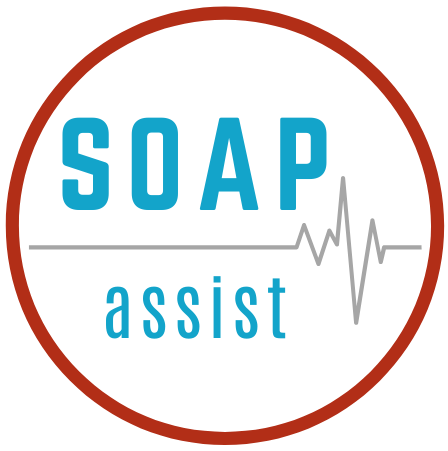The ideal Medical SOAP Note will contain objective information that is clear and concise. As its name implies, the objective portion of the SOAP note contains the objective data relevant to the patient encounter. This can be further broken down into various sections. These sections include vitals, ins and outs, physical exam, EKG, labs, and radio graphic studies. Other objective data can be documented here as well. Essentially, the goal of the objective section is to provide relevant data. In this article, we will talk about some of the things that make the objective portion of the SOAP note accomplish that goal.
The objective portion of the SOAP note will commonly begin with vitals. This gives the reader a snapshot of how the patient is doing. A general sense of how critical the patient’s condition is can be inferred from reviewing the vitals. It helps frame the reader’s mind. A critically elevated blood pressure will prompt the reader to look for signs of end-organ damage documented elsewhere in the note. If the patient is admitted to the hospital, vitals typically include a range. This indicates to the reader the overall trend of the patient’s status.
If admitted, data such as ins and outs typically follows. The quality of this data seems to always be under scrutiny. It is difficult to capture accurate ins and outs. Patients do not always use measuring devices when urinating or inform nursing staff that they have had a bowel movement. It is hard to blame them as this would be considered very abnormal behaviour anywhere but the hospital. Moreover, nursing shift changes and multiple individuals on care teams means there is the potential to duplicate documentation. We recommend adding relevant objective data that reflects the reliability of the ins and outs if appropriate. This allows the reader to better interpret the values.
In terms of the way vitals and ins and outs are documented, it is difficult to create a medical form template that will capture such customised information. It is typically best to let the electronic medical record handle documenting vitals. SOAPassist templates deal with this problem by incorporating a “reviewed and interpreted” statement. This allows the provider to add in any important vital signs after having reviewed them. If none are pertinent, the provider can simply move on.
The physical exam comes next, and it is crucial. A good physical exam will record all the important exam maneuvers related to the patient’s complaint or issues. These exam maneuvers will help rule in or rule out various diagnoses. It will also give the reader an indication of the patient’s current status. If a patient is admitted for a stroke, identifying the patient’s exact deficits can be vital for ongoing care. If a patient develops a new weakness or becomes altered, a prior physical exam can be referenced for comparison. This is applicable to many diagnoses.
Depending on the complexity of the patient, these exam manners can be many and varied. SOAPassist has devised a method for providers to have templates that remind them of each of the exam manners that should be performed. When generating an online medical SOAP note, all of the important exam manners from the various templates selected will populate into the SOAP note un duplicated. SOAPassist curated templates have many exam maneuvers already listed. These templates can be saved, modified, and adapted to each provider’s practice pattern.
The challenge with this method is that each provider documents their physical exam a little bit differently. Additionally, there are some exam manners that are very specialised. We found that setting these specific exam manners aside in their own separate section draws them to the reader’s attention. We have created a separate section entitled “Specialised Testing”. This section is for dilated eye exams, digital rectal exams, diabetic foot exams etc. This allows for better customisation and organisation.
Disclaimer: SOAPassist curated templates are created for use by licensed medical providers. While they are examples of what a provider might document, their intended purpose is to provide a starting point for documentation and do not constitute medical recommendations.

